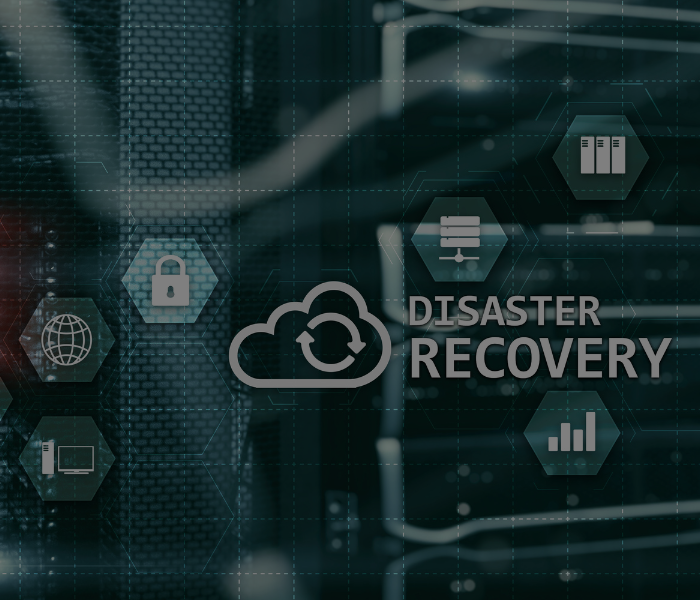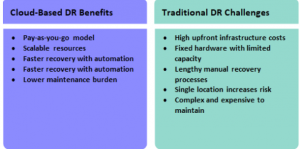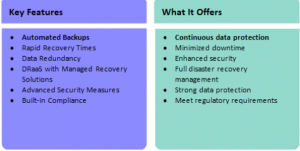
93% of organizations have faced business disruptions in the past year, ranging from data loss and server outages to cyberattacks. For Indian businesses, the financial impact of such disruptions is rising, with an average cost of INR 179 million per data breach in 2023. Whether caused by technical failures, natural disasters, or cyber threats, these events can lead to downtime, data loss, and significant reputational damage.
The question is – are you prepared for such disruptions?
Traditional disaster recovery methods, with their high costs and slow recovery times, are becoming impractical. Cloud-based disaster recovery (DRaaS) offers a faster, scalable, and cost-effective solution to keep your business running during disruptions.
Why Cloud-Based Disaster Recovery?

Cloud-based DR ensures business continuity by quickly restoring data and operations during power outages, server failures, or other unexpected events. Here’s why it outperforms traditional methods:
A cloud-based approach eliminates the need for expensive hardware, allowing you to scale resources as needed, ensuring efficiency without over-committing.
Key Features of Cloud-Based Disaster Recovery

Data Loss and Recovery: A Growing Threat in India
In 2023, Indian organizations faced numerous disruptions – from ransomware attacks to hardware failures. While 64% of businesses were hit by ransomware, the need for a disaster recovery (DR) plan extends far beyond cyberattacks. Whether due to system failure, natural disaster, or human error, a robust DR plan ensures minimal downtime and faster recovery.
Cloud-based DR helps prevent these losses by offering customizable Recovery Time Objective (RTO) and Recovery Point Objective (RPO) options. For example:
Recovery Time Objective (RTO)-
What It Means- Time to restore business after an outage
Recovery Point Objective (RPO)
Example- Financial services: RTO of minutes to ensure business continuity
Recovery Point Objective (RPO)
What It Means- Acceptable amount of data loss (time)
Example- Manufacturing: RPO of near-zero to avoid major disruptions
Future Trends in Disaster Recovery
As technology evolves, so do the methods to ensure business continuity. Let’s explore some emerging trends in disaster recovery:
- AI-Driven Analytics: AI and machine learning predict disruptions, optimizing recovery efforts and enabling proactive measures.
- Blockchain for Data Integrity: Blockchain secures data integrity and eliminates reliance on a single point of failure.
- IoT Monitoring: Real-time IoT devices monitor infrastructure, alerting businesses to potential issues early.
Implementation Best Practices for Cloud-Based Disaster Recovery
Aspect | Best Practices
Planning – Set clear recovery objectives, prioritize assets, and plan in detail.
Testing – Conduct regular DR tests, document results, and improve systems.
Ongoing – Monitor continuously, automate processes, and update plans regularly.
Vendor Selection – Choose a reliable, scalable, and compliant vendor with strong security.
Security and Compliance Considerations
Data security and compliance are essential for Indian businesses adopting cloud-based DR.
- Data Residency: Ensure sensitive data is stored within India to comply with the Data Protection Bill, especially for sectors requiring data localization.
- Data Security: Implement robust security measures, including encryption, multi-factor authentication (MFA), and role-based access control (RBAC), in line with Indian regulations and international standards like ISO/IEC 27001.
Conclusion: Act Now to Protect Your Business
Business disruptions – from data breaches to system failures – are increasingly costly. Cloud-based DRaaS offers the agility, speed, and cost-effectiveness that Indian businesses need to ensure business continuity and minimize losses.
Don’t wait for disaster to strike. Contact Cloud 9 Infosystems today to Schedule a DR consultation and ensure your business is protected for the future.
